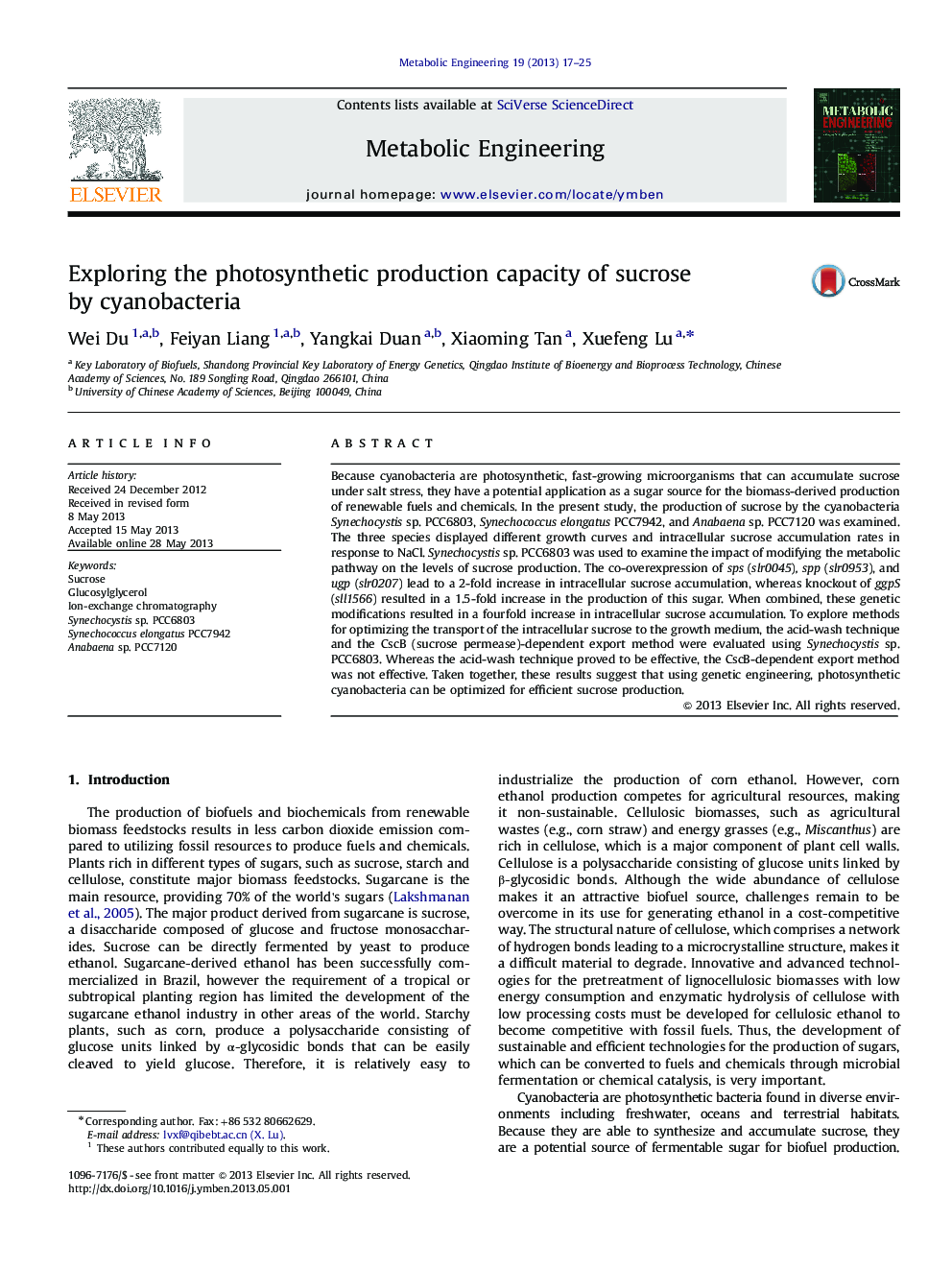| Article ID | Journal | Published Year | Pages | File Type |
|---|---|---|---|---|
| 6494716 | Metabolic Engineering | 2013 | 9 Pages |
Abstract
Because cyanobacteria are photosynthetic, fast-growing microorganisms that can accumulate sucrose under salt stress, they have a potential application as a sugar source for the biomass-derived production of renewable fuels and chemicals. In the present study, the production of sucrose by the cyanobacteria Synechocystis sp. PCC6803, Synechococcus elongatus PCC7942, and Anabaena sp. PCC7120 was examined. The three species displayed different growth curves and intracellular sucrose accumulation rates in response to NaCl. Synechocystis sp. PCC6803 was used to examine the impact of modifying the metabolic pathway on the levels of sucrose production. The co-overexpression of sps (slr0045), spp (slr0953), and ugp (slr0207) lead to a 2-fold increase in intracellular sucrose accumulation, whereas knockout of ggpS (sll1566) resulted in a 1.5-fold increase in the production of this sugar. When combined, these genetic modifications resulted in a fourfold increase in intracellular sucrose accumulation. To explore methods for optimizing the transport of the intracellular sucrose to the growth medium, the acid-wash technique and the CscB (sucrose permease)-dependent export method were evaluated using Synechocystis sp. PCC6803. Whereas the acid-wash technique proved to be effective, the CscB-dependent export method was not effective. Taken together, these results suggest that using genetic engineering, photosynthetic cyanobacteria can be optimized for efficient sucrose production.
Related Topics
Physical Sciences and Engineering
Chemical Engineering
Bioengineering
Authors
Wei Du, Feiyan Liang, Yangkai Duan, Xiaoming Tan, Xuefeng Lu,
